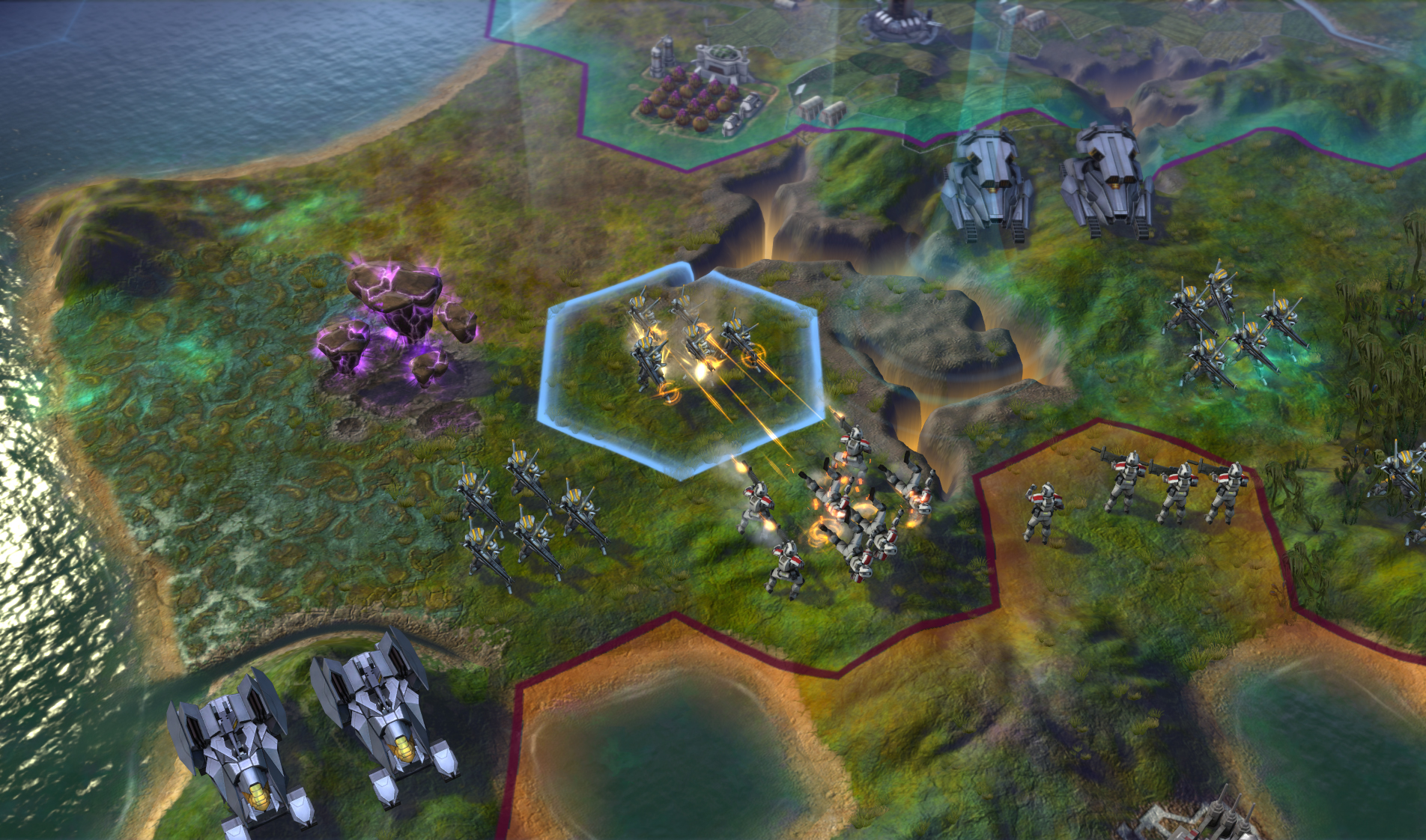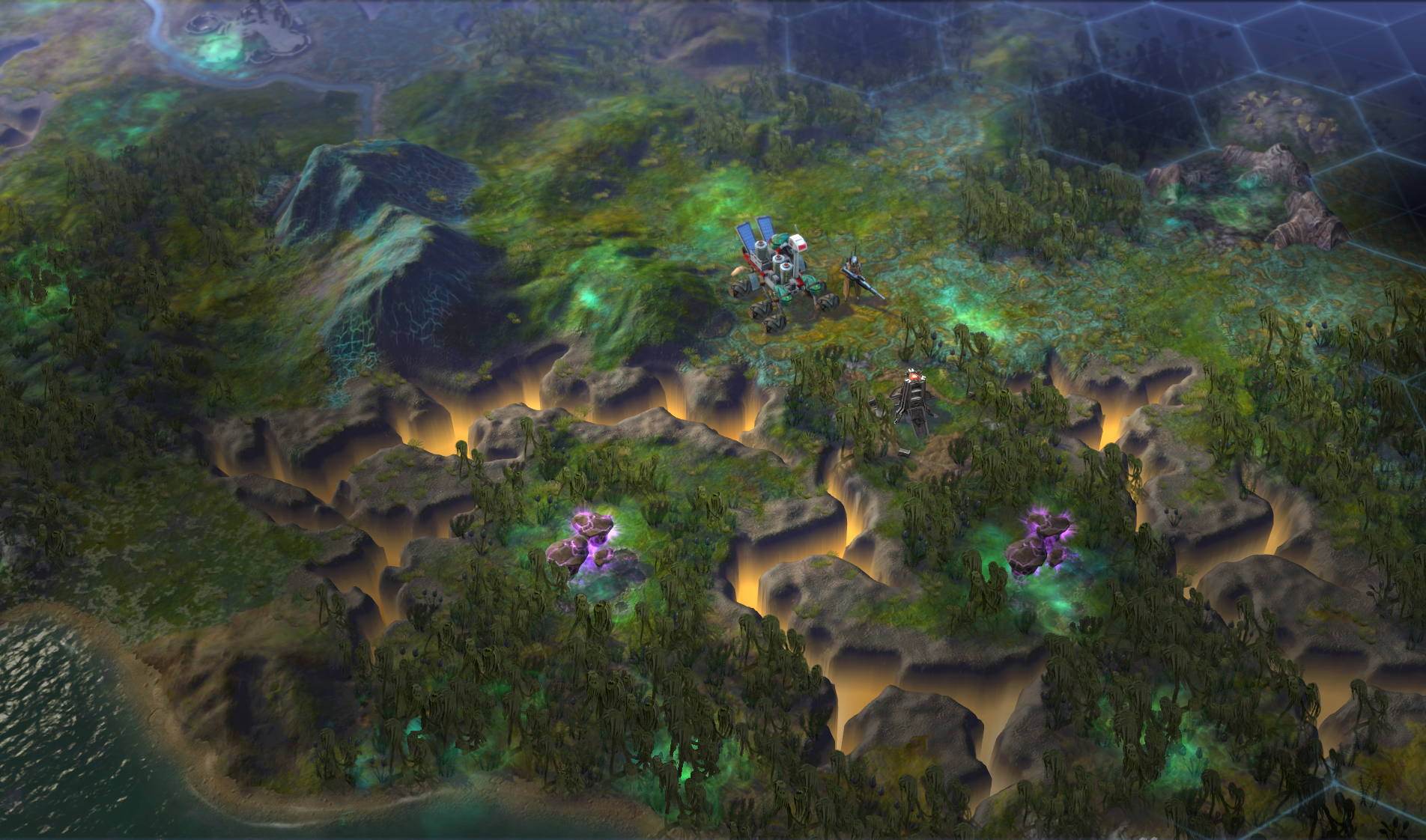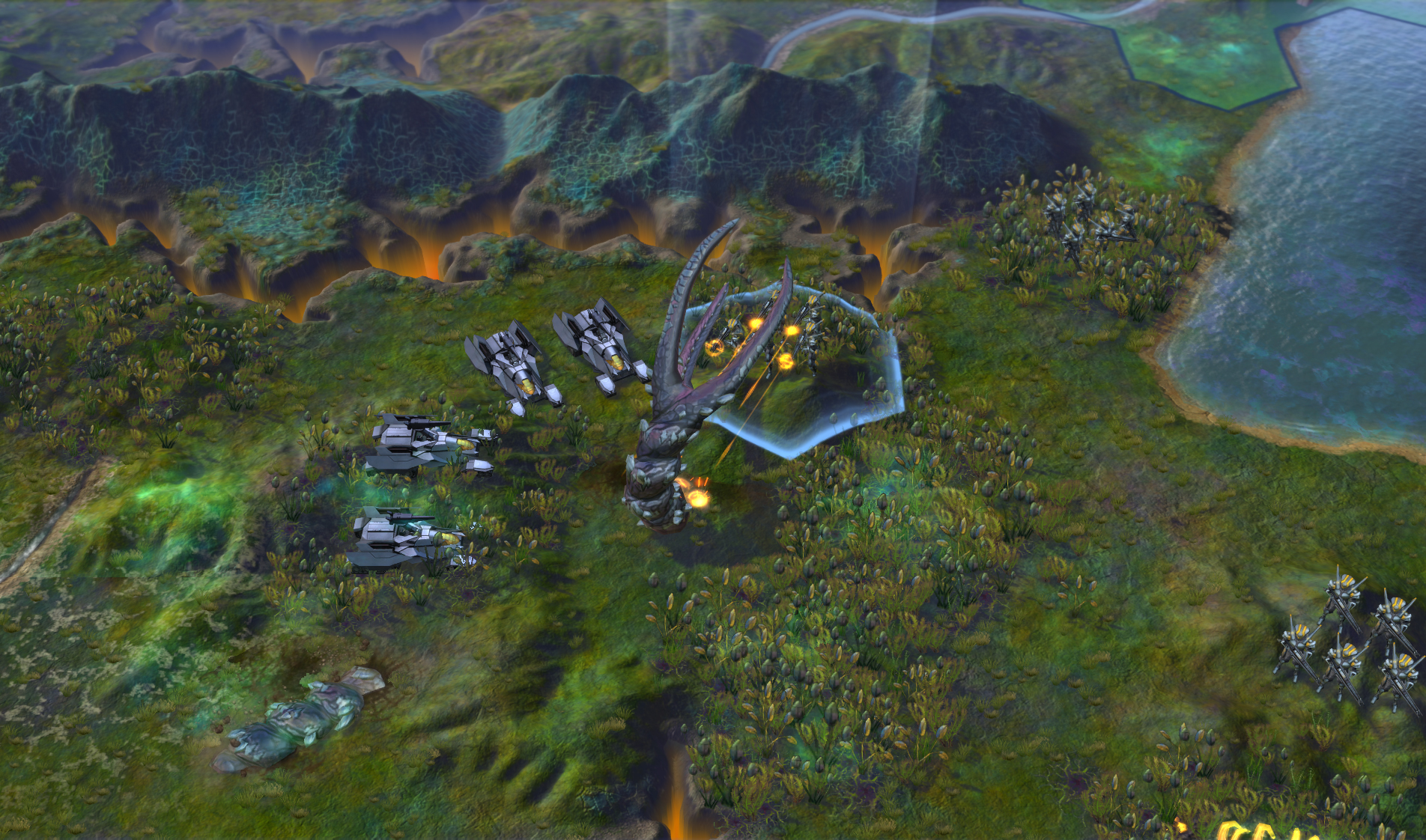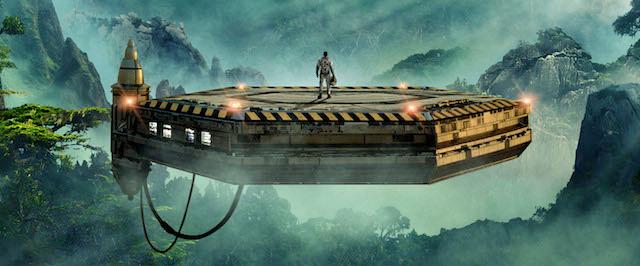We’ve probably all theorised about fictional situations and how we’d deal with them. The zombie apocalypse, any end-of-the-world narrative, or maybe even less far-reaching scenarios like exploring and colonising new planets in space. Well, just last week I got to put my hypothetical space adventure decisions to the test in the next chapter of Civilization.
I didn’t get to spend more than about 30-45 minutes with it, but I started from the opening of the game and got a good understanding of its beginnings.
All the usual aspects of a Civilization game are here. You start off with a handful of people at your command at a solitary base that you can choose to grow in a way you see fit. So I did what any new player would do: I set out to explore.
The land of Mandira that you’re trying to colonise is full of miasma — a gaseous toxin that’s a new environmental hazard for the series. So exploring is a little more risky than usual. Land on an area of the map that’s infected by this toxin and your soldiers’ health with slowly deplete each turn you leave them there.
Soon enough, though, larger threats surfaced. I stumbled upon an alien nest — filled with bug-like creatures that are fairly aggressive and will seek out any nearby invaders. I killed them off leaving my troops fairly unscathed, and set my explorer out a few more paces. Eventually I found a resource pod which set off a new mission quest: find three more resource pods. Easy enough! Except for the fact that the stretch of land I could see out in front of me was also infested with miasma and other alien nests. While I made my way to what looked like other resource pods across the map, simultaneously researching areas of biology and genetics for my civilisation, a few things happened.

I met a few leaders of other civilisations. The first sighting was exciting — it was good to know fellow humans were surviving out in space, not that that was unexpected. Other leader introductions quickly followed the first one, and soon I was learning all about what Firaxis had explained in a presentation just before we went hands on: that different communities had different approaches to humanity’s future, ideals that were replicated not only in their decisions, strengths and weaknesses as civilisations but even in their fashion choices.
I met Samatar Jama Barre of the People’s African Union, for instance, whose strengths were in diplomacy, growth and health and weaknesses in production and religion. There was Suzanne Marjorie Fielding of the American Reclamation Corporation, too, whose nation has a focus in science, infrastructure and production while lacking in cultures religion.

Each civilisation can specialise in what’s called an “affinity”, which represents one of three possible choices in steering humankind’s future on this alien planet. They are: supremacy, purity, and harmony. Researching technologies, Firaxis said during their presentation, is the most common way of gaining points in your affinity. Eventually disagreements in how humans should be treating this planet and their life there could lead you towards war with nations whose ideals don’t align with yours. Unfortunately my newfound relationships were just that — too new to start rashly declaring any allies or enemies.
In between exploring and meeting new civilisations, I had to make decisions about what station charters to support. Do I go for the Banu Musa science think tank? Or the Shackleton geological mapping enterprise? I would have to decide between Scyon group labs or to support the McDonough biomechanical research. At one point, I had to make a (very topical) choice on health care for the clinic workers I had just invested in.
Towards the end of my 40 turns with a pre-alpha build of Civilization: Beyond Earth, I was mostly on the defence. Giant alien worms known as siege worms were within scary distances of my city, and I quickly enlisted more soldiers to help stave off the attacks. Killing just the first worm was a feat of its own — it takes down soldiers like they’re flies, one swipe and they will die instantly.

Between my city’s main missile attacks and my soldiers distracting the worms, I managed to get it down. Not only that, but I took down the other two attacking worms that surfaced while I battled the first one. With two simultaneous worms, I couldn’t do much else besides swap between groups of soldiers to allow one to rest and heal up while the other group kept the worms’ attentions. It was a rough back-and-forth battle, but I somehow killed all three before my time was up.
I didn’t manage to get too in depth with the city I could build, research I could invest in or relationships I could explore, but it’s clear that Mandira and the space civilisation we embarked on is a dangerous one.
Civilization: Beyond Earth releases in the fall for PC, Mac and Linux.

Comments
10 responses to “My First 40 Turns With Civilisation: Beyond Earth”
DAMN SON
just got into Civ 5 about 6-7 months ago and the game is freaking awesome. Can’t wait to give this a go.
I still got a photo of me in the car with the collector’s edition on release day ^.^ Had no idea how much addiction lay ahead.
Love the civi games so much can not wait to give this a few late night turns, just one more turn
🙂 late nights haha… you can sit down at 3pm and suddenly *BAM* its 2am and you’re 300 turns into a game. i love it.
I JUST WANT THIS GAME NOW. I’m off work for at least 6 more weeks so it would be great :'(
My wallet is going to cry. Again.
Do the drones need me?
There goes my grades
I want it.